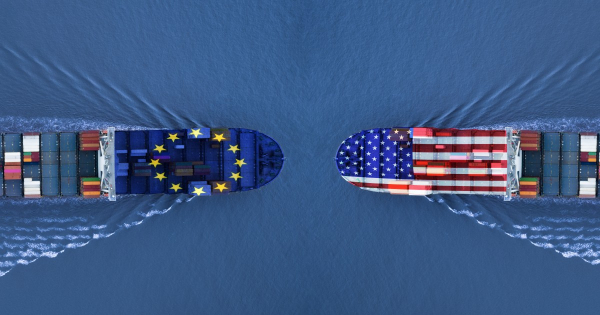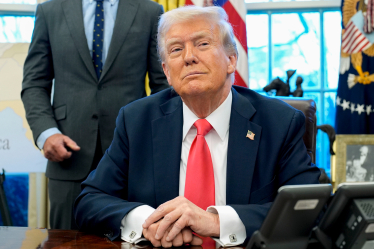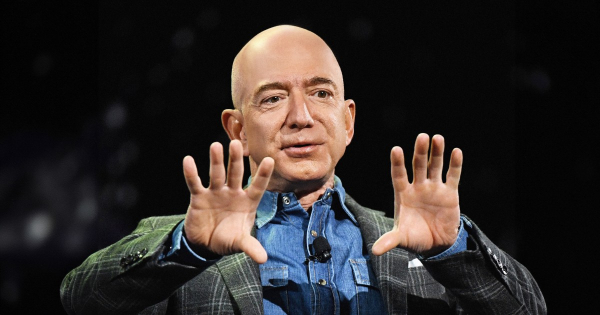
The world is rapidly plunging into a new wave of trade protectionism: the US, China, the EU and other major economies are erecting tariff barriers, ignoring the rules of the World Trade Organization. Global trade is fragmenting into geopolitical blocs, and international cooperation is giving way to economic isolation. What are the possible consequences of a global tariff war? Forbes retells the main points from the WSJ material.
Get insights that give you an edge: subscribe to Forbes Digital and always stay one step ahead in the business world.
From 49 UAH per month!
A decade ago, the world believed in free trade as the only viable growth model. Now, this paradigm is crumbling under the pressure of politics, security threats, and structural imbalances. Historians increasingly draw parallels with the isolationist wave of the 1930s, when the passage of the American Smoot-Hawley Tariff Act triggered a global tariff war and deepened the deepest economic crisis of the 20th century. Today, a similar scenario is gaining momentum, albeit in a new geoeconomic environment.
US breaks records in tariff war
US President Donald Trump is preparing a new wave of tariffs – on microchips, pharmaceuticals, cars. On April 2, he is expected to unveil plans to introduce “mirror” tariffs that will match barriers from countries that Washington believes discriminate against American goods. While these initiatives are still in the announcement stage, the market is already reacting to them as a turning point.

Popular Category Companies Date Yesterday “There will be no investments in Ferrexpo.” Kostyantyn Zhevago on sanctions, nationalization, meeting with Zelensky, and $1 billion in green energy. Big interview
Consumer confidence in the US is declining, stock indices are sinking, and multinational companies are starting to review investment programs. One of Europe's largest automakers, BMW, predicts losses of more than €1 billion due to new US tariffs and EU countermeasures. There will be no winners in this game, only deeper settlement in national markets and strategic winding down of cooperation, says BMW CEO Oliver Zipse.
This is not an isolated case. According to the analytical platform Global Trade Alert, in the G20 countries alone there are currently more than 4,650 import restrictions in force – including tariffs, anti-dumping duties, quotas and other barriers, Global Trade Alert reports. This is 75% more than at the beginning of Trump's first presidential term in 2016, and almost ten times more than at the end of 2008. At the same time, in the US, more than 90% of 5,200 product categories are covered by restrictions. Before Trump, this figure did not exceed 50%.
The average tariff on imports into the U.S. has reached 8.4%, the same level as in 1946, and in 2016, during Trump’s first presidency, it was 1.5%, according to the Tax Foundation. If Trump’s initiatives are fully implemented, the average tariff could rise to 18%, a 90-year high.

“Make in the USA – and no tariffs!” Donald Trump wrote on Truth Social. “We are a country finally ruled by common sense, and the results will be spectacular.” Photo by Getty Images
Europe and Russia are also in the game
The cycle of introducing new trade barriers is not limited to the United States. In response to the American tariff policy, Europe, Canada, China, South Korea, Mexico, Vietnam, and Indonesia are preparing their own measures. Beijing has already imposed tariffs on American soybeans, imposed restrictions on industrial goods, and is preparing for a long-term conflict with Washington.
The European Union has announced 50% tariffs on imports of American whiskey and motorcycles, to take effect in April. Canada is restricting imports of American computers and sports equipment.
Mexico is launching anti-dumping investigations into Chinese chemicals and films, while Vietnam and South Korea are imposing restrictions on Chinese steel. But Australia and Japan, for example, are holding back from responding to new U.S. tariffs, fearing damage to their own economies. Such pragmatism, according to HSBC’s chief Asia economist, Frederick Neumann, could contain the escalation.
Even Russia, despite its strategic proximity to Beijing, has raised taxes on foreign car imports. The share of Chinese cars in the Russian market has exceeded 50%, compared to less than 10% before 2022.

World Trade Organization headquarters in Geneva, Switzerland Photo Getty Images
The WTO is losing influence
“It looks like we’re on the verge of a much larger, if not full-scale, trade war,” says Eswar Prasad, a professor of trade policy at Cornell University and a former IMF official. In this new aggressive economic reality, he adds, “it’s every country for itself.”
At the heart of this process is the systemic degradation of global regulation mechanisms. The World Trade Organization (WTO), which was created after World War II as a safeguard against economic isolationism, is losing influence. Since 2019, the WTO's Appellate Body has been paralyzed due to a blockade by the United States, which accuses the organization of exceeding its mandate.
WTO spokesperson Ismaila Dieng assures that member countries are still resolving disputes within the organization. And WTO Director-General Ngozi Okonjo-Iweala says that the organization was created precisely for such moments of crisis, to prevent escalation.
As a result, Fitch Ratings predicts that global economic growth will slow from 2.9% in 2024 to 2.4% in 2025 – in particular, due to the trade war involving the US and other countries.
Protection of industries and growth of the “defense industry”
Other factors are fueling the trend. Developed economies are trying to protect key industries – electric vehicles, green technologies, semiconductors – from Chinese competition.
Against the backdrop of Russia's invasion of Ukraine and Trump's statements that Europe must pay for its own security, military funding and demand for domestically produced goods are increasing. This is generating a demand for economic autonomy.
China, for its part, is trying to compensate for weak domestic demand with aggressive exports, which is generating a wave of dumped goods in Europe, Southeast Asia, and Latin America. The answer is new barriers, local subsidies, and political tension.
“In the 1990s, the dominant narrative was that integration made both Europe and the US stronger, and that global challenges should be addressed together. That is no longer the case,” says Neil Shearing, chief economist at Capital Economics.



